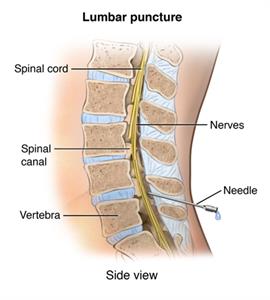Polio
What is polio?
Previous generations of Americans had reason to fear poliomyelitis, most often called polio. The disease is spread by a virus. It can cause paralysis. The disease is now rare in the U.S. because of a vaccine against the virus. But polio still exists in a few countries. People who have not been vaccinated can get it while traveling to a region where the disease still happens.
Polio can take several different forms:
- Inapparent polio. Most cases are this type. When people have this form, they don't have symptoms. But they can still pass the virus on to other people.
- Cases with mild symptoms. People with this form may have a mild illness with symptoms similar to those from the flu. But the illness doesn't appear to affect the brain. People with this form usually recover within a week.
- Paralytic polio. This type includes weakness that develops quickly and turns into paralysis.
What causes polio?
Polio is spread through the feces or mucus of people infected with the virus. In about 1 in 200 cases, people who have polio become paralyzed. The paralysis usually affects the legs, and it is permanent. Polio usually affects children under age 5. The disease is more common in the summer and fall.
Who is at risk for polio?
You are at increased risk for polio if you:
- Have not received the polio vaccine
- Were exposed to someone infected with the virus
What are the symptoms of polio?
Polio can cause a variety of symptoms. Depending on the severity of the case, these can include:
- Fever
- Tiredness (fatigue)
- Vomiting
- Headache
- Neck stiffness
- Pain in the arms and legs
- Weakness
- Paralysis
- Trouble breathing, swallowing, or speaking
How is polio diagnosed?
A healthcare provider may diagnose polio by checking your stool or throat for poliovirus. He or she may also want to do a spinal tap (lumbar puncture) to get a sample of your spinal fluid to examine.
How is polio treated?
Polio can't be cured. Healthcare providers focus on treating symptoms. They may also prescribe medicine, including pain medicine, and suggest bed rest. Some people with polio can't breathe on their own will need a machine called a ventilator to help them breathe.
What are the possible complications of polio?
The complications of polio can vary.
- Most people recover without problems.
- Some people may develop muscle weakness.
- A few people will have permanent muscle paralysis.
Living with polio
Many people who have had polio develop a condition called post-polio syndrome decades later. Symptoms can include new muscle weakness and fatigue. Some people may have muscle shrinkage. Most people who didn't have severe symptoms from polio don't have severe symptoms from this problem. If you have this condition, exercise and stretching may help you feel better.
Can polio be prevented?
Being vaccinated against polio can protect you from the disease. Children should get a series of vaccines starting in infancy. If you're an adult going to a country where cases are still occurring, you may need to be vaccinated. Adults can have a 3-dose series of vaccines. This may be needed in people who haven't been fully vaccinated or don't know if they have been.
People with certain immune problems can catch the disease from a child who has recently been vaccinated with oral polio vaccine. This type of vaccine is no longer used in the U.S.
Key points about polio
- Polio is rare in the U.S. but continues to occur in some countries.
- It can be prevented with the polio vaccine.
- If you are going to travel to a country where polio occurs, make sure you are properly vaccinated against it.
Next steps
Tips to help you get the most from a visit to your healthcare provider:
- Know the reason for your visit and what you want to happen.
- Before your visit, write down questions you want answered.
- Bring someone with you to help you ask questions and remember what your provider tells you.
- At the visit, write down the name of a new diagnosis, and any new medicines, treatments, or tests. Also write down any new instructions your provider gives you.
- Know why a new medicine or treatment is prescribed, and how it will help you. Also know what the side effects are.
- Ask if your condition can be treated in other ways.
- Know why a test or procedure is recommended and what the results could mean.
- Know what to expect if you do not take the medicine or have the test or procedure.
- If you have a follow-up appointment, write down the date, time, and purpose for that visit.
- Know how you can contact your provider if you have questions.
Get the care you need from world-class medical providers working with advanced technology.
Cedars-Sinai has a range of comprehensive treatment options.



